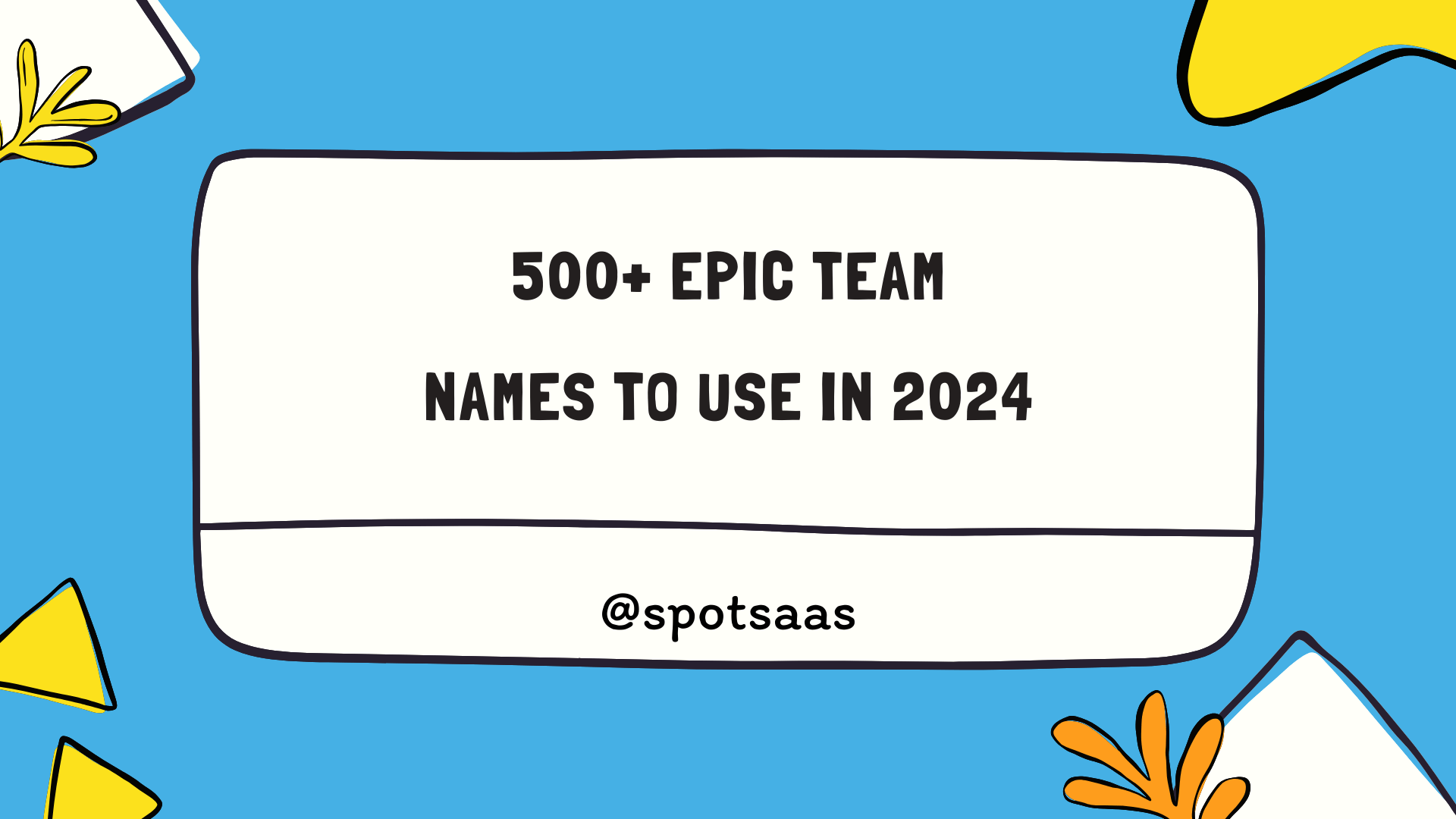How To Choose The Best Training Management Systems In 2024
Choosing the right training management system in 2023 can be a daunting task. With numerous systems on offer such as Connecteam, iSpring, and MoodleCloud each with its unique capabilities it’s pivotal to make an informed decision.
This article aims to simplify that selection process for you by outlining key features and considerations in a digestible manner. Read on to discover how you can effectively choose the best training management system tailored to your specific needs.
Understanding Training Management Systems
Training management systems are software platforms designed to support and streamline the administration, delivery, and tracking of training programs within an organization. These systems play a crucial role in the modern workplace by providing a centralized hub for managing all aspects of employee development.
They offer several benefits, including improved efficiency, enhanced compliance, better learning outcomes, and increased employee engagement.
Definition and purpose
A training management system is a tool used by many people and groups. It helps to plan, do, and track a learning or training plan. This kind of system gives you the power to make your own courses and follow progress online.
With it, trainers can share knowledge easier. It also makes sure all are on the same page in their learning journey. The main goal is to enhance skills and meet goals in less time than usual methods.
Importance in modern workplace
Training management systems play a big role in today’s work spots. Work is fast and people must keep up with change. These systems make sure workers know what they need to do their job well.
They can learn new things at any time, in any place. This makes work smoother and avoids any mess-ups or delays. Companies that use these systems have an edge over others who don’t.
So, picking the right one is key for success in 2023.
Benefits of implementing a training management system
Using a training management system can help your team. Here are some great things it does:
| The system organizes all training information in one place. |
| It can track and show how each person is doing with their training. |
| This tracking helps to see what people need more help with. |
| It is easier to set up new training with these systems. |
| You can make and share reports about the training. |
| Training plans can be made to fit each person’s needs. |
| These systems save time because they do many tasks at once. |
Key Features to Look for in a Training Management System
When selecting a training management system, it is crucial to consider key features such as course creation and management capabilities, reporting and analytics functionality, customization options, a user-friendly interface, and integration capabilities.
Course creation and management capabilities
A good training management system should have strong course creation and management capabilities. This means it should allow you to easily create and organize courses, modules, and lessons.
It should also provide tools for uploading content like videos, presentations, and quizzes. The system should have features that enable you to track the progress of learners and manage their enrollments or completion certificates.
Additionally, the system must offer options for collaboration and communication between trainers and learners, such as discussion forums or messaging tools. A training management system with robust course creation and management capabilities will help you efficiently deliver effective training programs to your audience while ensuring a seamless learning experience.
Reporting and analytics
Reporting and analytics are key features to look for when choosing a training management system in 2023. These tools allow users to track and measure the effectiveness of their training programs.
With reporting capabilities, you can easily generate reports on various metrics such as learner progress, course completion rates, and assessment scores. Analytics provide insights into trends and patterns within your training data, helping you identify areas for improvement and make data-driven decisions.
By leveraging reporting and analytics in your training management system, you can continuously monitor the success of your training initiatives and ensure they align with your organization’s goals.
Customization options
Customization is an important feature to consider when choosing a training management system in 2023. With customization options, you can tailor the system to meet your specific needs and preferences.
This includes customizing the interface, branding, and content to align with your organization’s unique style and requirements. Additionally, some systems offer advanced customization features that allow you to create personalized learning paths for employees based on their roles or skill levels.
By having these customization options, you can create a more engaging and effective training experience for your workforce while ensuring that the system fits seamlessly into your existing workflow.
User-friendly interface
A user-friendly interface is an important feature to consider when choosing a training management system. It makes it easier for users to navigate and interact with the software. With a user-friendly interface, individuals can quickly access the features they need without confusion or frustration.
This ensures that both trainers and trainees can efficiently use the system without facing any technical difficulties. A well-designed interface also enhances the overall user experience, making it more enjoyable and engaging for everyone involved in the training process.
Training management systems with a user-friendly interface often have intuitive menus, clear navigation paths, and visually appealing designs. They may also offer customizable dashboards, allowing users to personalize their workspace according to their preferences.
By prioritizing simplicity and ease of use, these systems promote productivity and reduce the learning curve associated with adopting new software. Whether you are a trainer managing courses or a learner accessing materials, a user-friendly interface will help streamline your training experience in 2023.
Integration capabilities
Training management systems with strong integration capabilities are essential for seamless workflows and efficient data management. These systems can integrate with other software platforms, such as HRIS (Human Resource Information Systems) or CRM (Customer Relationship Management), allowing for the smooth transfer of information and reducing the need for manual data entry.
Integration capabilities also enable organizations to connect their training management system with external tools like virtual meeting platforms or content creation tools, enhancing the overall learning experience.
By having a training management system that offers robust integration capabilities, organizations can streamline their processes and maximize the effectiveness of their training programs in 2023.
Considerations When Choosing a Training Management System
When choosing a training management system, it is important to consider factors such as budget and pricing models, deployment options, industry-specific needs, support and training, and future scalability.
Budget and pricing models
Investing in the best training management system requires more than just understanding its features and capabilities. One of the critical aspects to consider in 2023 is the budget and the pricing model of the system, which can significantly impact your organization’s finances. Here’s a simple table illustrating various pricing models for different training management systems:
| Training Management Systems | Pricing Model | Cost |
|---|---|---|
| Connecteam | Subscription-based | $29-$599 per month |
| iSpring | Per user | $3.66 per user/month |
| 360Learning | Subscription-based | $8-$14 per user/month |
| MoodleCloud | Subscription-based | $80-$1000 annually |
| ProProfs | Per user | $2-$5 per user/month |
| TalentLMS | Subscription-based | $59-$429 per month |
Always have a clear understanding of your budget and the pricing structure of your preferred training management system. Remember, cost should never compromise the quality of training you aim to offer.
Deployment options
There are different deployment options available for training management systems in 2023, including cloud-based and on-premises solutions. Cloud-based deployment allows users to access the system remotely through the internet without the need for installing any software or maintaining servers.
This option offers flexibility, scalability, and ease of use. On-premises deployment involves installing the system on your own servers and managing it internally. This option provides more control over data security but requires technical expertise and maintenance efforts.
It’s important to consider your organization’s specific needs and resources when choosing a deployment option for your training management system in 2023.
Industry-specific needs
Different industries may have specific needs when it comes to training management systems. For example, healthcare organizations might require features that support compliance training and tracking of certifications.
Manufacturing companies may need a system that allows for hands-on simulations and assessments. Retail businesses could benefit from a training management system that integrates with point-of-sale systems for product knowledge training.
It’s important to consider these industry-specific needs when choosing a training management system in 2023 to ensure it meets the unique requirements of your organization’s field.
Support and training
When choosing a training management system, it’s important to consider the support and training options available. Look for a provider that offers comprehensive customer support, including technical assistance and troubleshooting.
This will ensure that you have help whenever you encounter issues or need guidance on using the system effectively. Additionally, consider whether the provider offers training resources such as documentation, video tutorials, or webinars to help you and your team get up to speed with the new system quickly.
By having access to these resources, you can ensure a smooth implementation process and maximize the benefits of your chosen training management system in 2023.
There are several learning management systems available in 2023 that provide excellent support and training options. For example, TalentLMS offers extensive customer support via phone and email, as well as an online knowledge base with helpful articles and guides.
They also provide live webinars for users who want more hands-on training. Another option is iSpring Learn LMS which provides 24/7 customer support through chat or email along with user-friendly documentation for self-help.
Future scalability
As technology continues to evolve, it is important to consider the future scalability of a training management system. Scalability refers to the system’s ability to handle increasing demands and grow with your organization.
In 2023, it is crucial to choose a training management system that can accommodate your future needs. Look for systems that offer flexible licensing options or allow you to easily add more users and courses as your training requirements expand.
Additionally, consider whether the system can integrate with other software or tools that you may need in the future. By selecting a training management system with future scalability in mind, you can ensure that your investment will continue to meet your evolving needs as technology advances.
Final Thoughts and Recommendations
When choosing the best training management system in 2023, it is important to carefully consider your specific needs and requirements. Look for a system that offers robust course creation and management capabilities, comprehensive reporting and analytics features, customization options to align with your organization’s branding and processes, an intuitive user-friendly interface, and the ability to integrate with other systems seamlessly.
Additionally, take into account factors such as budget and pricing models, deployment options (cloud-based or on-premises), industry-specific needs, available support and training resources from the vendor, and future scalability of the system.
By thoroughly evaluating these criteria and conducting thorough research on different options available in the market today such as Connecteam, iSpring or MoodleCloud for instance), you can make an informed decision that meets your organization’s training management needs effectively.
Recap of key features and considerations
To choose the best training management system in 2023, here is a recap of the key features and considerations to keep in mind:
| Feature/Consideration | Description |
|---|---|
| Course Creation and Management | Easily create and manage training courses, upload content, and organize materials. |
| Reporting and Analytics | Comprehensive reporting and analytics for tracking learner progress, measuring effectiveness, and identifying areas for improvement. |
| Customization Options | Customize the platform’s look and feel to match your organization’s branding and specific needs. |
| User-Friendly Interface | Intuitive user interface for easy navigation and effective use by administrators and learners. |
| Integration Capabilities | Ability to integrate with other tools and systems used by your organization, such as HR software or learning content repositories. |
| Budget and Pricing Models | Evaluate system costs, including subscription fees and additional charges for features or users. Compare pricing models to fit your budget. |
| Deployment Options | Choose between on-premises or cloud-based solutions, considering factors like maintenance, scalability, and accessibility. |
| Industry-Specific Needs | Support for industry-specific requirements and compliance regulations, if applicable. |
| Support and Training | Access to reliable customer support and training resources to facilitate system setup and usage. |
| Future Scalability | Ensure the system can scale with your organization’s growth in terms of user capacity, features, and performance. |
Tips on how to effectively choose the best training management system
To effectively choose the best training management system, follow these tips:
| Identify your specific needs and requirements for training. | Consider the level of support and training provided. |
| Research and compare different training management systems. | Think about future scalability. |
| Evaluate the key features of each system. | Take advantage of demos or trial periods. |
| Consider your budget and pricing models. | Gather feedback from your team members. |
| Assess the deployment options available. | |
| Look for industry-specific solutions or systems. |
Recommended training management systems for different needs and budgets
When it comes to selecting a training management system, it’s crucial to consider your specific needs and budget. Here are a few recommended options for different needs and budgets:
| Training Management System | Key Features | Best for | Pricing |
|---|---|---|---|
| Connecteam | Course creation, reporting and analytics, user-friendly interface | Small to medium businesses | Affordable, with plans starting from low monthly fees |
| iSpring | Customization options, integration capabilities | Organizations seeking flexibility | Mid-range, offering free trial and various subscription plans |
| 360Learning | Collaborative learning, built-in course authoring | Companies fostering team-based learning | Premium pricing, with comprehensive features |
| MoodleCloud | Free, open-source platform, extensive customization | Institutions with tight budgets | Free to use, premium plans for advanced features |
| Docebo | Free, open-source platform, with extensive customization | Large corporations, demanding high-level functionality | High-end pricing, reflecting advanced capabilities |
When selecting the best training management system, consider reviewing its key features against your specific requirements, as well as its pricing, user reviews, and the support they offers. This will help you make an informed decision that could vastly improve your training delivery and management.
Conclusion
In conclusion, choosing the best training management system in 2023 requires careful consideration of key features, pricing, industry-specific needs, support and training options, and future scalability.
Remember to take into account factors such as customization options and integration capabilities to ensure a user-friendly experience. By evaluating different systems based on these criteria and utilizing resources like ratings and reviews, individuals can make an informed decision that meets their specific training requirements.





